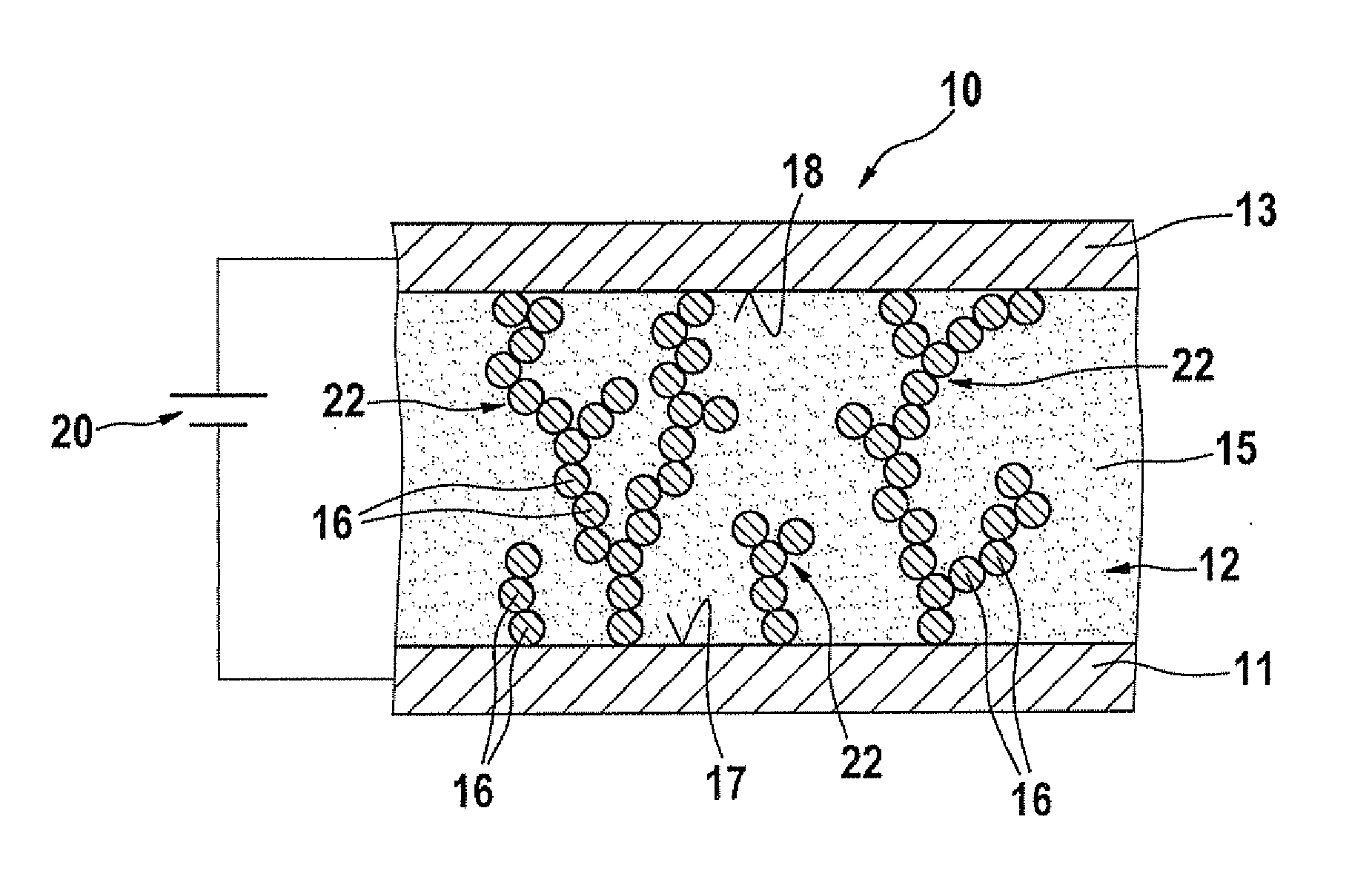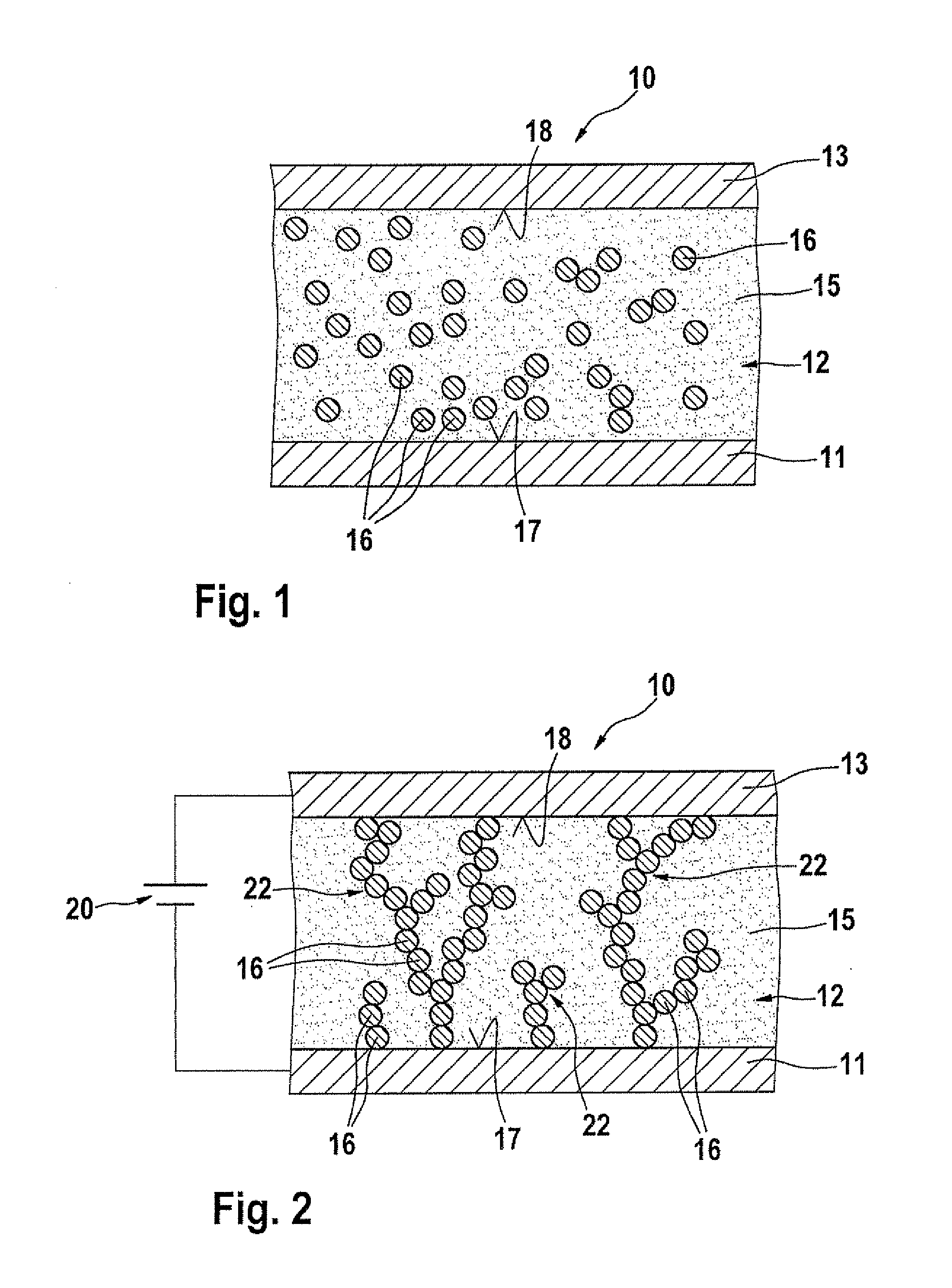Heat-conducting system between two component parts and method for preparing a heat-conducting system
a heat-conducting system and component technology, applied in the direction of manufacturing tools, soldering apparatus, semiconductor/solid-state device details, etc., can solve the problems of critical, or rather not optimal, material reduction of heat-transmission resistance, and achieve the effect of simplifying the situation of the heat-conducting medium
- Summary
- Abstract
- Description
- Claims
- Application Information
AI Technical Summary
Benefits of technology
Problems solved by technology
Method used
Image
Examples
Embodiment Construction
[0016]FIG. 1 shows a system10, made up of a first component part 11, an heat-conducting medium 12 and a second component part 13. In this instance, first component part 11 may be, for example, but not restrictively, an heat-generating electrical or electronic component part, such as a power transistor, an IC or the like. Second component part 13, is in turn, for example, but not restrictively developed as a heat-dissipating component part, such as a cooling element, which is to give off the heat generated by first component part 11 to the surroundings.
[0017]The heat-conducting medium is made up of a carrier material 15, especially in the form of a polymer matrix, in which, in the initial state, as shown in FIG. 1, metal salts in the form of metal ions 16 are mixed in, which are situated more or less uniformly in carrier material 15. As metal ions 16, copper ions and / or iron ions and / or aluminum ions and / or silver ions are used. There is at first no contact, as a rule, between the in...
PUM
| Property | Measurement | Unit |
|---|---|---|
| heat-conducting | aaaaa | aaaaa |
| electrically conducting | aaaaa | aaaaa |
| metallic | aaaaa | aaaaa |
Abstract
Description
Claims
Application Information
 Login to View More
Login to View More - R&D
- Intellectual Property
- Life Sciences
- Materials
- Tech Scout
- Unparalleled Data Quality
- Higher Quality Content
- 60% Fewer Hallucinations
Browse by: Latest US Patents, China's latest patents, Technical Efficacy Thesaurus, Application Domain, Technology Topic, Popular Technical Reports.
© 2025 PatSnap. All rights reserved.Legal|Privacy policy|Modern Slavery Act Transparency Statement|Sitemap|About US| Contact US: help@patsnap.com


